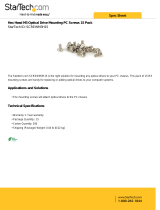
Table of contents
1 Product features ............................................................................................................................................. 1
Standard configuration features ........................................................................................................... 1
Front panel components ....................................................................................................................... 2
Rear panel components ....................................................................................................................... 3
Media card reader components ............................................................................................................ 4
Serial number location .......................................................................................................................... 5
2 Hardware upgrades ........................................................................................................................................ 6
Serviceability features .......................................................................................................................... 6
Warnings and cautions ......................................................................................................................... 6
Removing the computer access panel ................................................................................................. 7
Replacing the computer access panel ................................................................................................. 8
Removing the front bezel ..................................................................................................................... 9
Removing bezel blanks ...................................................................................................................... 10
Replacing the front bezel .................................................................................................................... 11
System board connections ................................................................................................................. 12
Installing additional memory ............................................................................................................... 13
DIMMs ............................................................................................................................... 13
DDR3-SDRAM DIMMs ...................................................................................................... 13
Installing DIMMs ................................................................................................................ 14
Removing or installing an expansion card .......................................................................................... 16
Drive positions .................................................................................................................................... 20
Installing and removing drives ............................................................................................................ 21
Removing a 5.25-inch drive ............................................................................................... 22
Installing a 5.25-inch drive ................................................................................................. 23
Removing a 3.5-inch device .............................................................................................. 25
Installing a 3.5-inch device ................................................................................................ 27
Removing a 3.5-inch hard drive ......................................................................................... 28
Installing a 3.5-inch hard drive ........................................................................................... 29
Installing a security lock ..................................................................................................................... 32
Cable lock .......................................................................................................................... 32
Padlock .............................................................................................................................. 32
v




















